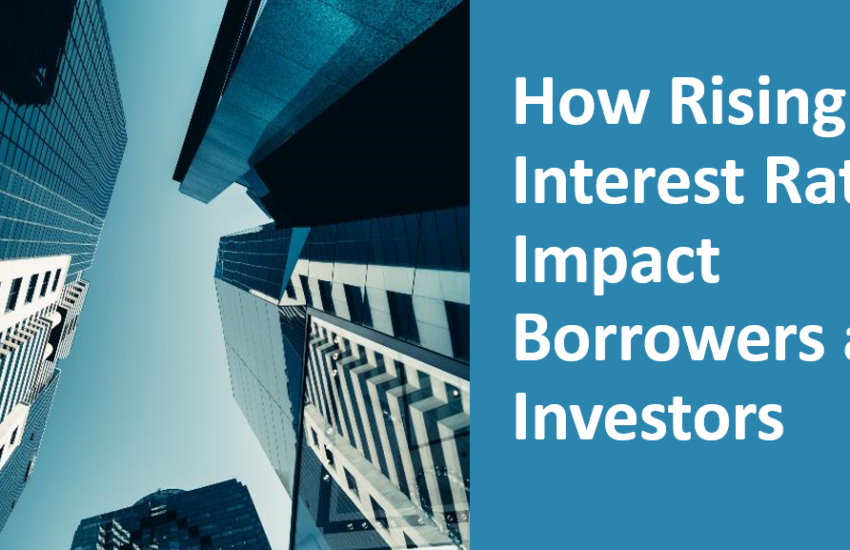How Rising Interest Rates Impact Borrowers and Investors
Interest rates are a fundamental factor in the global financial system, influencing the cost of borrowing, investment decisions, and overall economic activity. When interest rates rise, their effects ripple across various segments of the economy. Whether you’re a borrower grappling with loans or an investor navigating market fluctuations, understanding these impacts can help you make informed financial decisions. Here, we explore how rising interest rates affect borrowers and investors and provide actionable strategies for navigating this challenging environment.
Understanding Rising Interest Rates
Interest rates are typically controlled by central banks as part of their monetary policy. When central banks, like the Reserve Bank of India (RBI), increase policy rates (e.g., the repo rate), it’s often to combat inflation or stabilize the currency. This leads to a domino effect, raising rates for loans, deposits, and market instruments.
Key Reasons for Rate Hikes:
- Inflation Control: Higher rates help curb spending and reduce inflation.
- Currency Stability: Strengthening a depreciating currency by attracting foreign investments.
- Economic Cycle Management: Slowing down overheated economies to prevent asset bubbles.
Impact on Borrowers
Rising interest rates have a direct and immediate impact on borrowers by increasing the cost of borrowing across various loan types. Here’s how:
- Higher EMIs for Loans
Borrowers with floating-rate loans, such as home loans or education loans, experience a hike in Equated Monthly Instalments (EMIs). This puts additional strain on monthly budgets.
- Example: A 1% increase in interest on a 20-year home loan of INR 50 lakh can raise EMIs by approximately INR 3,000 per month.
- Costlier New Loans
Fixed-rate loans, while immune to immediate rate changes, become costlier for new borrowers. Auto loans, personal loans, and credit card borrowing rates tend to rise, discouraging new credit consumption.
- Strain on Disposable Income
As loan servicing consumes more income, households may cut back on discretionary spending, impacting sectors like retail and entertainment.
- Challenges for Businesses
For businesses, higher interest rates increase the cost of working capital loans, reducing profitability. Small and medium enterprises (SMEs), often relying on bank credit, face added financial strain.
Strategies for Borrowers
- Refinance Loans: Check if switching to another lender offers a lower interest rate.
- Prepay Loans: Use bonuses or savings to reduce loan principal and interest burden.
- Opt for Fixed Rates: For new loans, consider fixed-rate options to lock in rates before further hikes.
- Build Emergency Funds: Prepare for higher EMIs by saving a portion of your income for contingencies.
Impact on Investors
Rising interest rates influence investment decisions by altering returns, valuations, and risk perception.
- Stock Markets
- Decline in Equity Valuations: Higher interest rates increase the cost of capital for businesses, leading to lower profit margins and a decline in stock valuations.
- Shift to Fixed Income: As bonds offer more attractive returns, investors may move from equity to debt markets, further pressuring stock prices.
- Debt Markets
- Increased Yields: Rising rates lead to higher bond yields, making them attractive to risk-averse investors.
- Falling Bond Prices: Existing bonds with lower coupon rates lose value as new bonds with higher yields enter the market.
- Real Estate Investments
Higher mortgage rates dampen housing demand, potentially reducing real estate prices. However, commercial properties may still attract institutional investors seeking stable returns.
- Impact on Gold
Gold, traditionally a hedge against inflation, may lose its luster as rising rates make interest-bearing assets more attractive. However, geopolitical or market uncertainties may still drive demand for gold.
Strategies for Investors
- Diversify Investments: Spread your portfolio across equity, debt, gold, and other asset classes to mitigate risks.
- Consider Shorter-Term Bonds: With higher rates expected in the future, shorter-duration bonds reduce interest rate risk.
- Invest in High-Yield Debt Instruments: Explore fixed deposits (FDs), corporate bonds, or government schemes that now offer better returns.
- Evaluate Stocks Carefully: Focus on sectors less impacted by rising rates, such as FMCG or utilities, which tend to be more resilient.
How Rising Interest Rates Affect Specific Sectors
- Banking and Financial Services
Banks typically benefit as their net interest margin (NIM) improves when lending rates rise faster than deposit rates.
- Real Estate and Housing
Higher home loan rates deter new buyers, reducing demand and potentially cooling real estate prices, especially in residential markets.
- Consumer Discretionary
Sectors like automobiles and retail suffer as higher borrowing costs discourage big-ticket purchases.
- Export-Oriented Businesses
A stronger currency, often a result of higher rates, makes exports more expensive, impacting sectors like IT and textiles.
Broader Economic Impacts
- Reduced Inflation: Higher rates slow consumer spending, lowering demand and bringing inflation under control.
- Increased Savings: Rising deposit rates encourage households to save more, reducing liquidity in the market.
- Stronger Currency: Higher rates attract foreign investors to Indian markets, strengthening the rupee.
Conclusion
Rising interest rates are a double-edged sword, impacting borrowers, investors, and the economy in varied ways. While they increase the cost of borrowing, they also offer opportunities for savers and fixed-income investors. By understanding these effects and implementing strategic measures, individuals and businesses can navigate this environment effectively.
As central banks worldwide continue to adjust interest rates to balance economic stability, staying informed and adaptable remains the key to financial success. Whether you’re managing loans or investments, proactive planning can turn challenges into opportunities, securing your financial future.
Note:- The information provided on this blog is for educational and informational purposes only, does not constitute a suggestion to invest, ask your financial advisor or do your own research before investing in any instrument. Because there is risk involved in the market.
